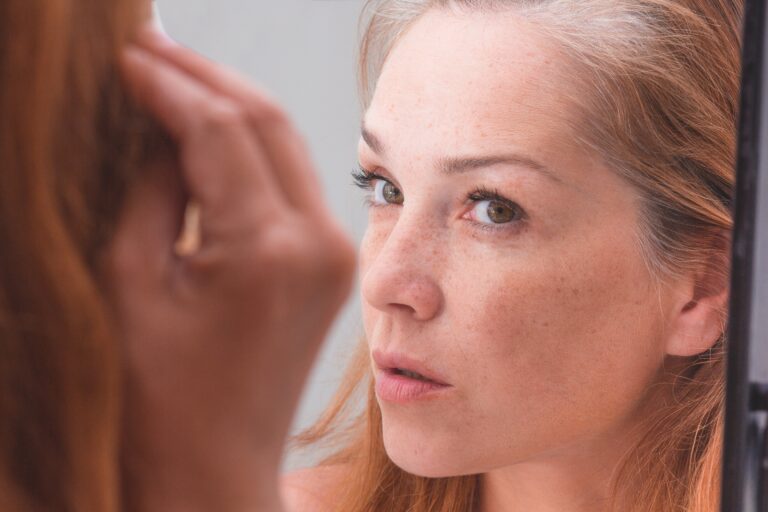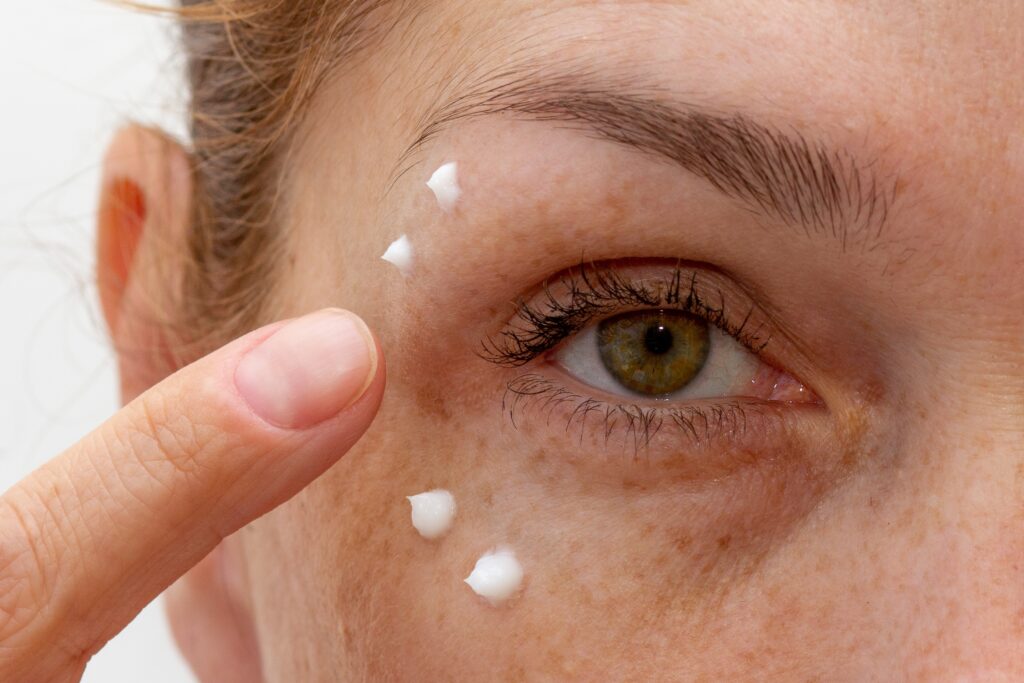What to do against age spots? 5 valuable tips
Around 90 per cent of people in Europe have pigmentation changes. Hardly anyone sees small reddish, brownish or ochre-coloured spots of pigmentation as a problem.
Larger areas of skin discolouration on the face are more of a nuisance. Here you can find out how such pigmentation or age spots develop and what you can really do about them. Here are our tips against age spots.

What to do about age spots? Understanding and counteracting the development of pigmentation spots
Pigment spots are all types of discolouration that are visible on the skin. In most cases, they are harmless. Depending on where the pigmentation is located, it is at most a cosmetic problem for those affected.
The best-known pigment changes on the skin include age spots, melasma, moles and freckles. While freckles and moles in certain areas are considered particularly attractive by some, the same cannot be said of age spots.
The pigment melanin is responsible for the changes in skin colour. Various factors can trigger an overproduction of the skin pigment. The result is a pigment spot.
Tip 1: Prevent age spots with UV protection
Preventing pigment spots (lentigo senilis) is relatively simple. The most important thing is to use suitable sun protection – even in winter! This is because UV rays are the main cause of dark spots.
Those who are frequently exposed to the sun are prone to pigmentation spots and also favour the ageing process of the skin. UV protection with a sun protection factor above 30 can therefore help to prevent age spots and is a simple anti-ageing remedy.
Incidentally, without a high level of sun protection, no treatment against pigmentation spots is effective in the long term.
Tip 2: Influence the formation of pigmentation spots through diet
You can actually influence the development of pigment spots through your diet, among other things. Your diet should be as varied as possible.
Vitamin C, which is found in many types of fruit and vegetables, is one of the most powerful antioxidants. It can neutralise free radicals that damage cells, among other things.
You should consume foods containing vitamin C raw if possible or only cook them briefly, as otherwise they will be destroyed.
There is also a suspected link between a folic acid deficiency (vitamin B12) and pigmentation spots.
It is always advisable to consult a doctor if you have severe brown spots. He or she can rule out deficiency symptoms and give effective tips for treatment.
Tip 3: Remove age spots with laser
In addition to a healthy and balanced diet and minimising UV radiation as a preventative measure, there are various external measures to treat pigmentation spots.
Benign and harmless skin changes or pigment spots are often removed using laser treatment.
The laser causes the colour particles in the skin to burst open. The body absorbs these naturally. During ablative laser treatment, the upper layers of the skin are removed in a controlled manner. The pigmentation spots become paler from treatment to treatment until they are no longer visible.
Tip 4: Chemical peels against pigmentation spots
Chemical peeling uses fruit acids to remove the top layer of skin. The skin then flakes and is reddened. In addition, sensitivity to UV light is increased.
A day cream with a high sun protection factor is now a ‘must’. Chemical peelings are not such a gentle procedure and are therefore not tolerated by every skin type.

Tip 5: Serums and tinctures for beautiful skin
There are active ingredients that fade pigmentation spots or age spots. They usually contain vitamin C as an antioxidant and other valuable ingredients. Similar to nutrition from the inside, such serums can work from the outside. In the long term, they can gently inhibit the formation of melanin in the skin.
The cosmetic fresh plant tincture for pigmented skin from vleur supports the treatment of pigmentation spots in a gentle way. It contains a unique formula of exclusive plant extracts combined with the fresh juice of wild aloe anmaris.
- Evergreen bearberry softens and lightens pigmentation.
- Rosmary
- Field horsetail supports the skin barrier
- Camomile
- Liquorice softens the skin.
The high-molecular mediators in aloe anmaris allow the active ingredients in the tincture to penetrate deep into the skin and achieve their optimum effects.
You can use the tincture on its own or combine it with your favourite vleur creams or masks.
Get the vleur fresh juice plant tincture and enjoy an even complexion with that extra glow!
